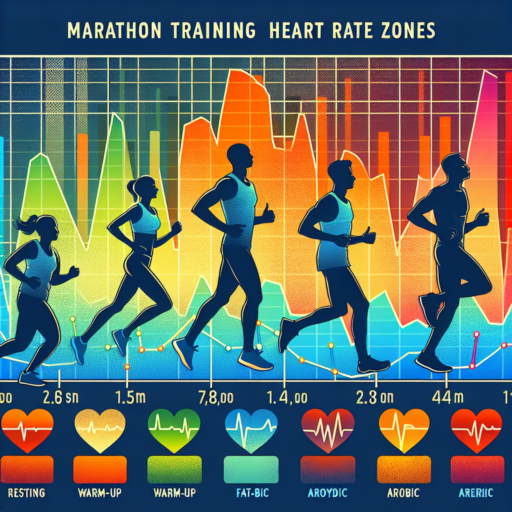What is a good heart rate for marathon training?
Understanding the optimal heart rate for marathon training is essential for runners looking to improve performance while minimizing the risk of injury. Essentially, a good heart rate falls within the aerobic zone, which is typically between 70% and 80% of your maximum heart rate (MHR). This range is crucial as it helps in building endurance — a key factor for a successful marathon.
To calculate your MHR, the standard formula of 220 minus your age can be used as a starting point. For example, a 30-year-old would have an estimated MHR of 190 beats per minute (bpm), making the ideal marathon training heart rate between 133 and 152 bpm. Training within this range ensures that you are maximizing cardiovascular benefits without overstressing your body.
It’s important to note that these numbers can vary based on individual fitness levels, running experience, and physiological differences. Therefore, athletes often employ heart rate monitors during training sessions to maintain the right intensity level. Observing how your heart rate responds over time to similar distances and paces can offer valuable insights into your fitness progress and help tailor your training plan more effectively.
What heart rate zones should long runs be in?
Understanding the optimal heart rate zones for long runs is crucial for both maximizing endurance training benefits and preventing overtraining. Generally, long runs, which are a staple in any distance runner’s training plan, should primarily be conducted in the Aerobic or «Fat Burning» zone. This is typically between 60% to 80% of your maximum heart rate (MHR). Training within this range helps improve your cardiovascular system’s efficiency, increases fat metabolism, and enhances your endurance capacity without overly stressing your body.
Aerobic Zone Training for long runs emphasizes running at a comfortable pace where one can maintain a conversation without struggling for breath. This zone not only optimizes fat burning but also builds the aerobic base necessary for long-distance running. Staying within this heart rate zone ensures that you are working out at a level of intensity that promotes stamina and recovery, which are essential for preparing your body for the rigors of longer distances and more intense sessions in the future.
It’s also important to touch on the significance of occasionally incorporating segments of your long runs in the Threshold or Tempo Zone, which is around 80%-90% of your MHR. Although the core of long runs should be in the lower intensity aerobic zone, brief intervals at a higher intensity can stimulate improvements in your lactate threshold, enabling your body to perform efficiently at faster paces. However, such high-intensity efforts should be used sparingly within the context of long runs to avoid unnecessary fatigue and the risk of injury.
Is a 190 heart rate bad while running?
Understanding your heart rate while running is crucial to both your performance and health. When the number on your heart rate monitor hits 190, it’s understandable to wonder if this is a cause for concern. The answer to whether a 190 heart rate is bad while running depends on several factors including age, fitness level, and individual health conditions.
One key factor to consider is the maximum heart rate, which is typically calculated as 220 minus your age. For a young athlete, a heart rate nearing 190 might be within acceptable limits, especially during intense training or competition. However, for older individuals or those new to exercise, reaching such a peak might indicate they are pushing their bodies too hard.
It’s essential to listen to your body and understand the signs of overexertion. Symptoms like dizziness, shortness of breath, or chest pain at a 190 heart rate could signify that you’re exceeding your safe limit. Training within 50-85% of your maximum heart rate is generally recommended for improving cardiovascular health without the risk of overdoing it.
No se han encontrado productos.
Which heart rate zone should I train in?
Identifying the optimal heart rate zone for training is essential for maximizing workout efficiency and achieving your fitness goals. The human body has different heart rate zones, each offering unique benefits for exercise and health. Whether your goal is to improve cardiovascular endurance, burn fat, or enhance athletic performance, understanding which zone to target during your workouts can make all the difference.
To begin with, it’s critical to comprehend the five primary heart rate zones. These range from very light intensity, ideal for warming up and recovery, to maximum effort, which challenges your body to its physical limits. Generally, moderate-intensity zones are recommended for those looking to improve their cardiovascular health, while higher intensity zones are suited for advanced athletes aiming to increase their aerobic capacity.
For individuals focusing on fat loss or starting an exercise regime after a period of inactivity, training in the moderate-intensity heart rate zone – typically 50% to 70% of your maximum heart rate – is advisable. This zone encourages fat burning over quicker carbohydrate metabolism, and is sustainable for longer periods, making it highly effective for weight loss and building endurance. Conversely, for seasoned athletes or those seeking to enhance their VO2 max, operating at 70% to 85% of your maximum heart rate pushes you into a higher intensity zone, optimizing cardiovascular gains and improving oxygen consumption.




